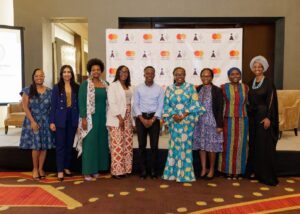As Ghana’s economy continues to grow, a troubling trend is emerging – a large portion of the country’s youth remain either unemployed or trapped in low-paying, informal jobs.
A new digital tool called the Africa Youth Employment Clock, launched this week by World Data Lab (WDL) and the Mastercard Foundation, paints a concerning picture of the youth employment landscape in the West African nation.
According to the Clock’s data, while 6 million Ghanaian youth between the ages of 15 and 35 are employed, a significant number of these jobs are in the informal sector or in low-productivity agriculture and services. Dr. Reshma Sheoraj, Vice President of Strategic Engagements at WDL, highlighted this issue: “It’s not a question of unemployment, it’s a question of people getting more dignified, fulfilling jobs, and higher wages.”
The data reveals that approximately 1.2 million Ghanaian youth live in extreme poverty, defined as earning less than $2.15 per day. “We saw a lot of informality, and people are actually not taking home substantial income. So they’re living in what we call working poverty,” Dr. Sheoraj explained. “It goes back to the quality of the jobs, the higher paying jobs, and how do we boost more productivity in the sectors to kind of deal with the issue of low wages in an economy.”
The situation is particularly dire for young women, with the Clock showing low labor force participation rates among this demographic. “Women’s participation in the labor force is important in most economies, and I think there’s more that can actually be done to improve women’s labor force participation and get them into real employment in Ghana, because I think the economic benefits of women contributing would be enormous as well,” said Dr. Sheoraj.

She suggested that incentives and support systems, such as childcare assistance, could help alleviate the burden of household responsibilities, enabling more women to engage in the workforce meaningfully.
The Africa Youth Employment Clock, accessible at www.africayouthjobs.io, aims to inform policymakers, development actors, and other stakeholders with real-time data and projections on youth employment trends across Africa. The tool is a collaborative effort between WDL and the Mastercard Foundation, which has set a goal of enabling 30 million young Africans to access dignified and fulfilling work by 2030.
“This tool will play a key role in delivering precise labor market insights to support our youth empowerment efforts,” said Rica Rwigamba, Country Director for Ghana at the Mastercard Foundation. “As we witness unparalleled growth in the continent’s youth population this decade, we recognize young women and men of Africa as the dynamic workforce and leaders capable of solving local and global problems.”
Experts argue that addressing the youth employment crisis in Ghana and across Africa requires a multi-faceted approach, including investments in education, skills training, and job creation initiatives, particularly in sectors with high growth potential. Improving access to finance and entrepreneurship support for young people could also play a crucial role in fostering sustainable livelihoods.
As Ghana’s population continues to grow, failure to address the youth employment challenge could have severe social and economic consequences. The Africa Youth Employment Clock provides a data-driven tool to guide policymakers and stakeholders in their efforts to unlock the potential of the continent’s youngest workforce.










